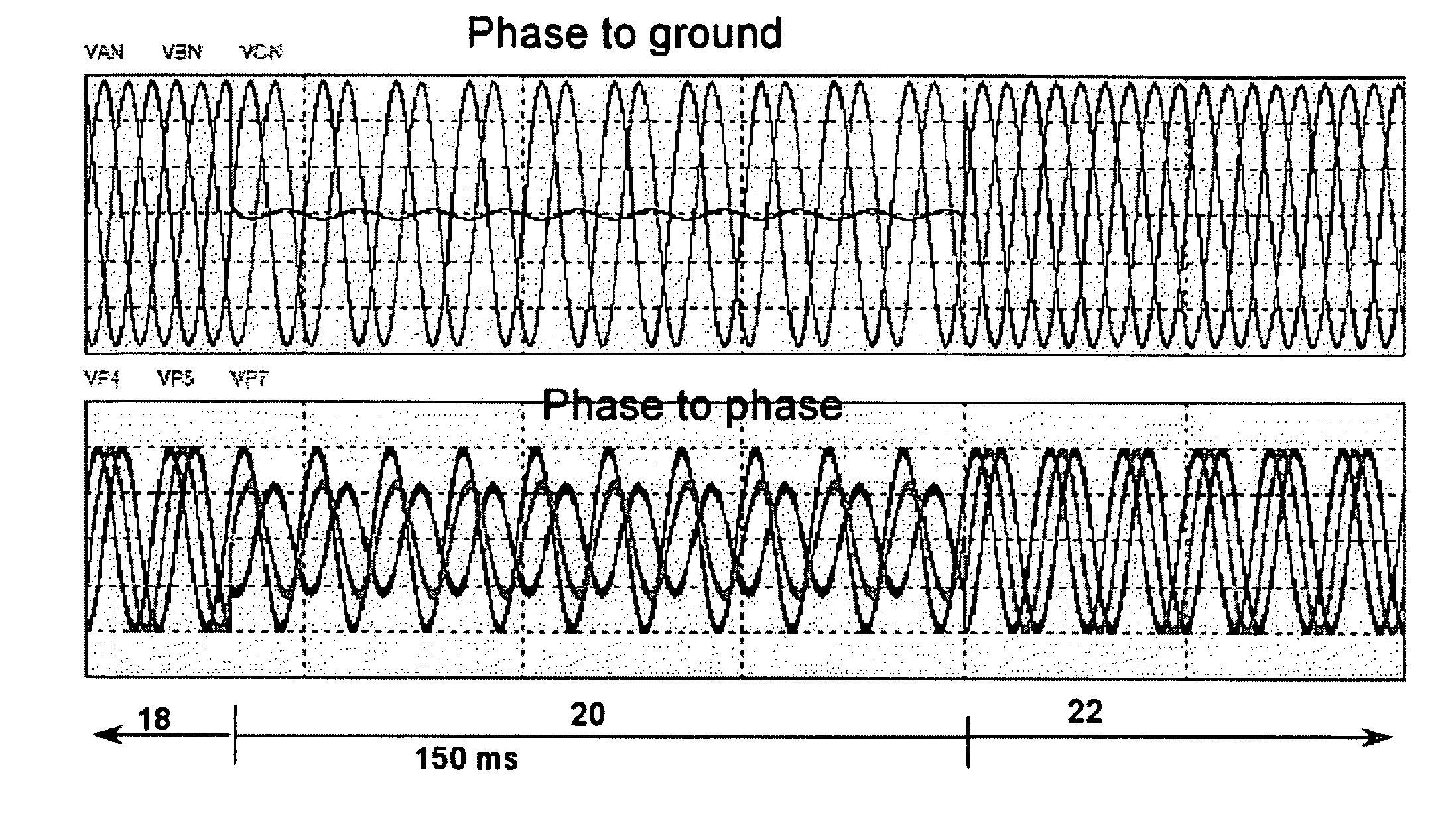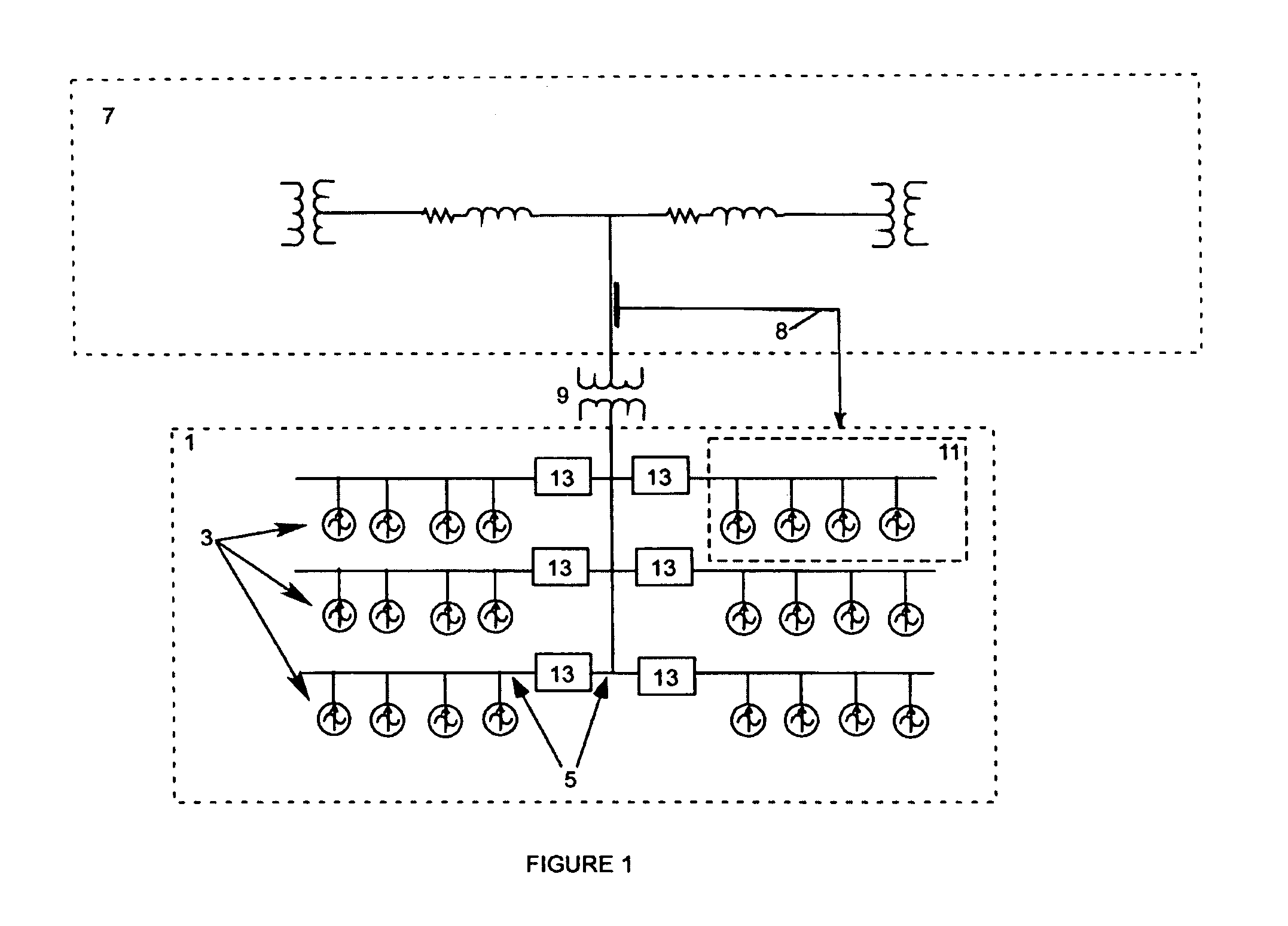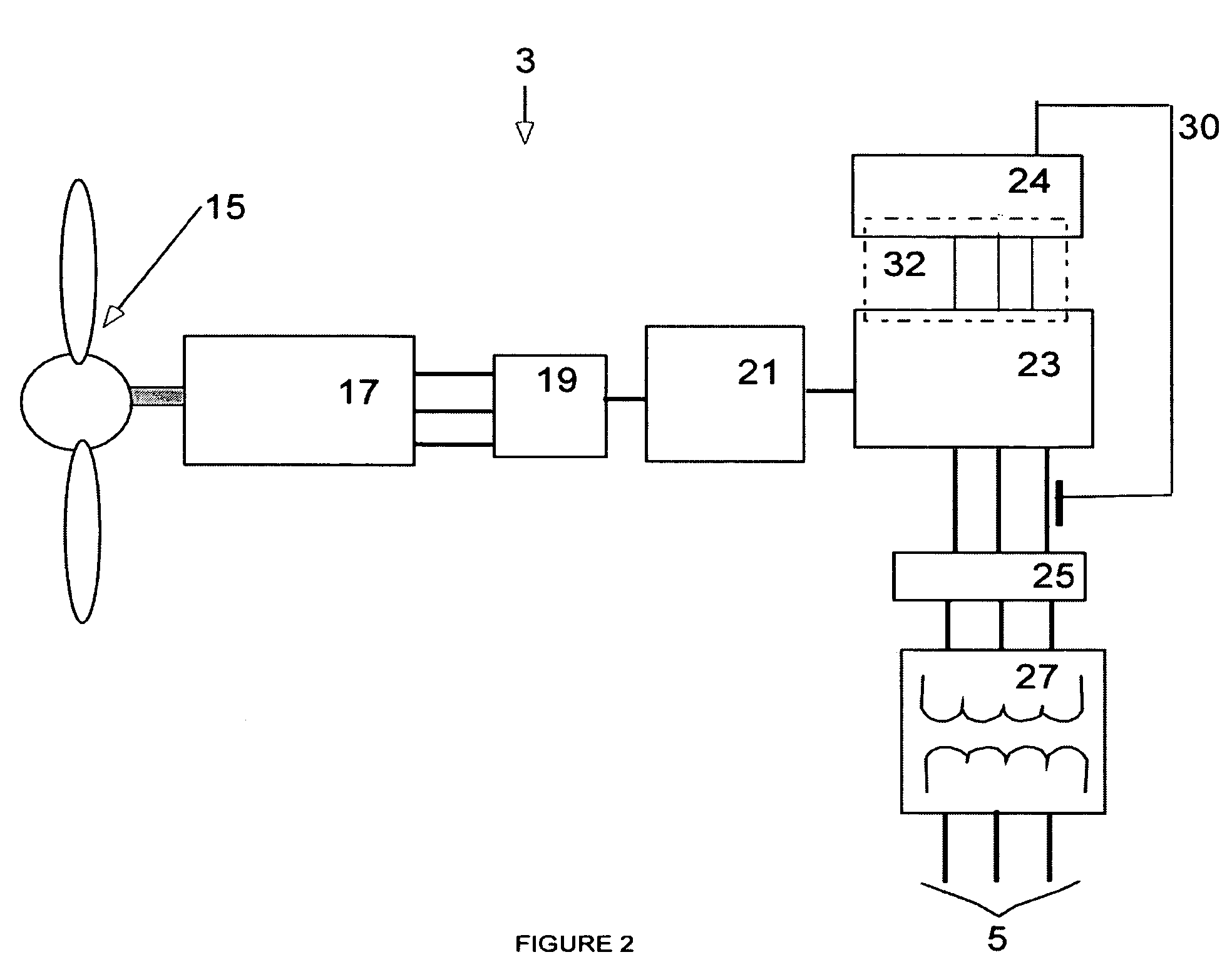Generator with utility fault ride-through capability
a technology of utility faults and generators, applied in the direction of electric generator control, emergency power supply arrangements, machines/engines, etc., can solve the problems of difficult control of the dc bus, disruption of power to large regions, and much more serious stability problems, and achieve the effect of simplifying the generator torque command approach
- Summary
- Abstract
- Description
- Claims
- Application Information
AI Technical Summary
Benefits of technology
Problems solved by technology
Method used
Image
Examples
Embodiment Construction
[0030]Refer to FIG. 1, which shows a collection of generators with current regulated inverter systems in the form of a wind or water current energy farm 1. Individual wind turbines 3 are connected to a wind farm collection system 5. The energy farm collection system 5 may interface with a utility grid distribution, sub-transmission, or transmission system 7 via a substation transformer 9. The energy farm collection system 5 may isolate wind turbine groups 11 using sectionalizing devices 13. The sectionalizing devices, often circuit breakers or fuses, isolate a group of turbines 11 in case of an electrical fault within the turbine group 11, thus allowing the rest of the windfarm 1 to continue operating. Groups of turbines (such as 11) are connected in common to the energy farm collection system 5 for interfacing with a utility grid 7.
[0031]The energy farm 1 is made up of fluid-flow turbines 3, shown in detail in FIG. 2. Referring now to FIG. 2, each fluid-flow turbine has a rotor 15....
PUM
 Login to View More
Login to View More Abstract
Description
Claims
Application Information
 Login to View More
Login to View More - R&D
- Intellectual Property
- Life Sciences
- Materials
- Tech Scout
- Unparalleled Data Quality
- Higher Quality Content
- 60% Fewer Hallucinations
Browse by: Latest US Patents, China's latest patents, Technical Efficacy Thesaurus, Application Domain, Technology Topic, Popular Technical Reports.
© 2025 PatSnap. All rights reserved.Legal|Privacy policy|Modern Slavery Act Transparency Statement|Sitemap|About US| Contact US: help@patsnap.com



